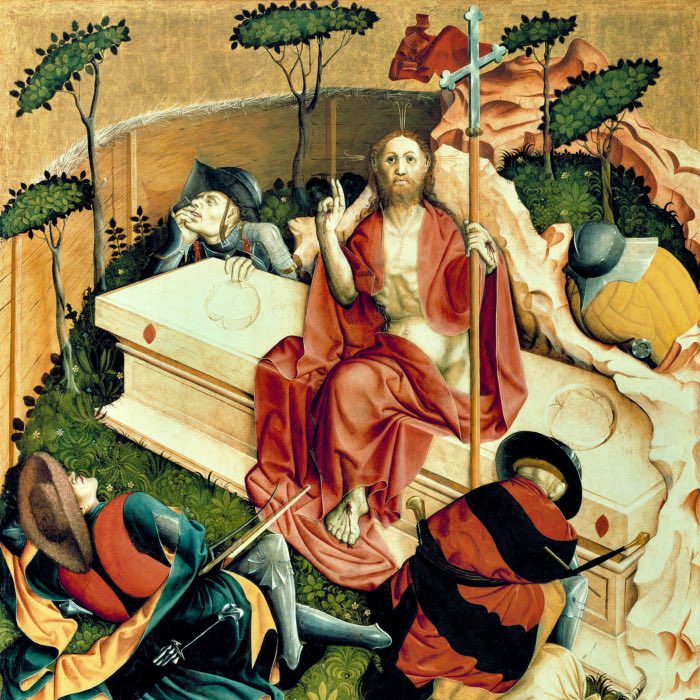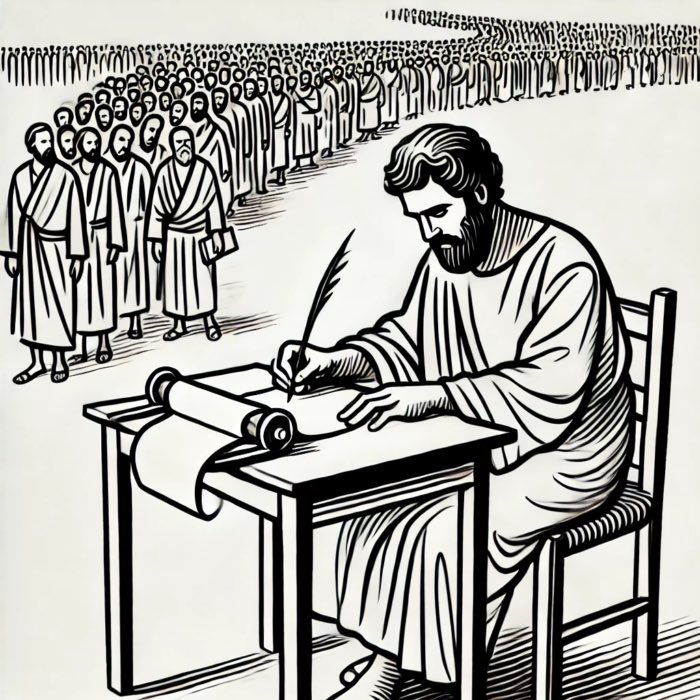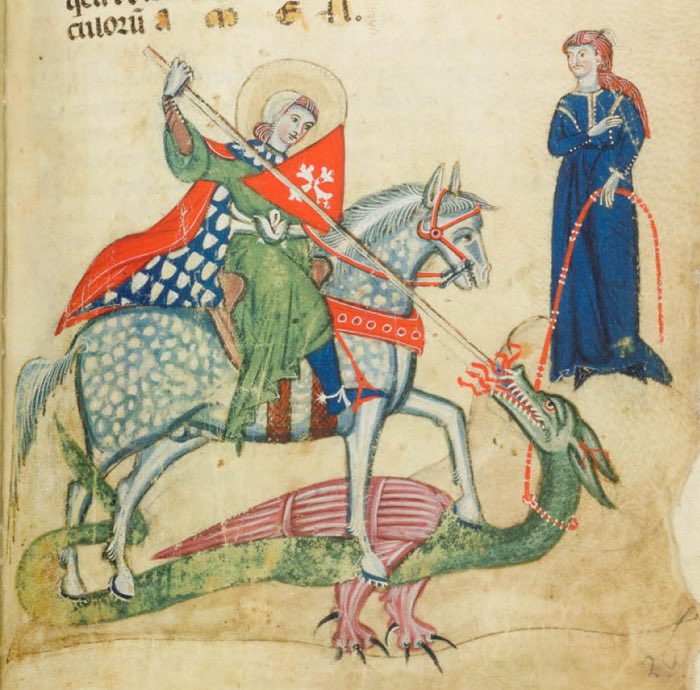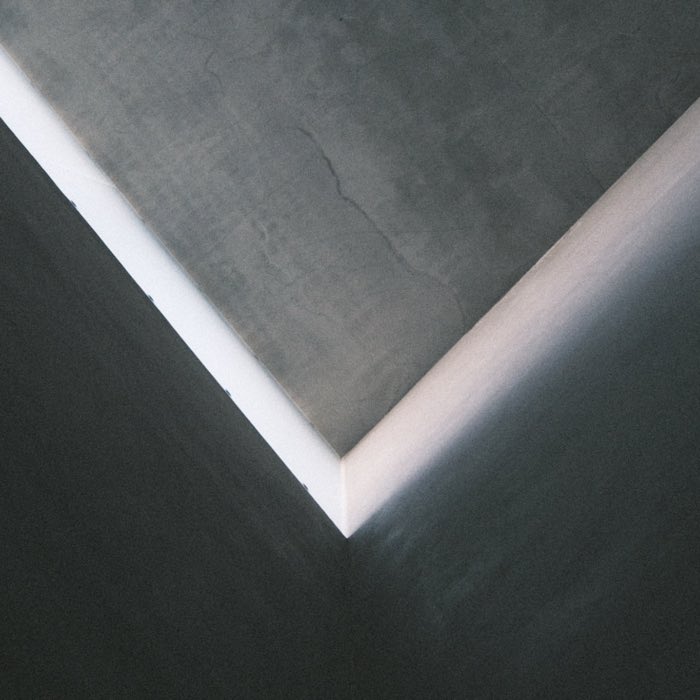Basilica of the Holy Apostles in Cologne
St. Aposteln is one of Cologne’s twelve major Romanesque churches, embodying the city’s rich medieval heritage and religious devotion. Located at Neumarkt, one of Cologne’s busiest squares, the church stands as an architectural and spiritual landmark. Known for its distinctive Three-Apsed Choir (Trikonchos) and Romanesque westwork, St. Aposteln has played a central role in both liturgical and civic life throughout its long history. Despite suffering severe damage during World War II, the church has been meticulously restored and continues to serve as an active parish. Today, St. Aposteln symbolizes both Cologne’s long backtracking history and its ongoing commitment to preserving its legacy in a modern urban setting.
 Modern ceiling paintings in St. Aposteln.
Modern ceiling paintings in St. Aposteln.
Early history and Salian reconstruction
St. Aposteln, or the Basilica of the Holy Apostles, has a deep-rooted history dating back to the early medieval period. Although it is believed that a church may have existed on this site as early as the 9th century, there are no firm historical records to support this claim. What is historically certain, however, is the establishment of a collegiate church by the 10th century. This first documented church was relatively simple, but at the beginning of the 11th century, it underwent significant expansion, likely during the archbishopric of Heribert (999–1021) or his successor Pilgrim (1021–1036). This new construction, often referred to as the ‘Pilgrimbau’ (lit. Pilgrim’s building), set the foundational layout of the current church. The west-facing orientation of the church, modeled after St. Peter’s Basilica in Rome, was particularly notable as most Christian churches were traditionally oriented to the east.
The Romanesque expansion and Three-Apsed Choir
St. Aposteln underwent another major transformation at the end of the 12th century. The shift in religious and liturgical practices led to the construction of the distinctive Three-Apsed Choir (Trikonchos) around 1200. This design, likely inspired by the recently completed Trikonchos of Groß St. Martin, consists of three semicircular apses that form a cloverleaf pattern around the eastern part of the church. This structure marked a significant shift in architectural focus from the west to the east, aligning with new liturgical trends. The Trikonchos emphasized symmetry and balance, creating a centralized space that stood in contrast to the more traditional Latin cross layout seen in other Romanesque churches. Its construction, alongside the development of the nearby Neumarkt as a central marketplace, solidified the church’s importance within the growing city.
The decline, secularization, and 19th-century restoration
The church’s fortunes declined in the early modern period, particularly after the secularization imposed by the French occupation in 1802. The collegiate foundation was dissolved, and the church entered a period of neglect. By 1822, St. Aposteln had deteriorated so badly that it was closed for safety reasons, marking a low point in its history. However, extensive restorations took place between 1871 and 1891, restoring much of the church’s Romanesque character and stabilizing its structural integrity. These restorations set the stage for St. Aposteln’s revival as a key part of Cologne’s architectural and spiritual heritage.
Destruction and reconstruction after World War II
Like many of Cologne’s historic buildings, St. Aposteln was heavily damaged during World War II, particularly during the air raids of 1942–1944. The war left the church in ruins, with much of the structure in need of significant repair. A temporary restoration was completed by 1957, but the full reconstruction of the eastern choir and Trikonchos only began in 1961. This extensive restoration work, which continued until 1975, aimed to faithfully rebuild the Romanesque architecture of the church while incorporating modern design elements. Notably, the restoration included the re-excavation of the western crypt, which had been filled in during earlier periods. Contemporary artistic additions, including the vault paintings in the Trikonchos by Hermann Gottfried (1988–1993), blend with the historic architecture, giving the interior a renewed spiritual and artistic vitality.
On September 18, 1965, Pope Paul VI elevated St. Aposteln to the rank of a Basilica minor with the apostolic letter Templis praeclaris. This honor underscored the church’s spiritual and historical importance within the Catholic Church and the city of Cologne, further solidifying its role as a key religious landmark.
Modern role and current usage
In the post-war era, St. Aposteln has become a symbol of Cologne’s Romanesque revival, blending its medieval heritage with contemporary elements and modern art inclusions. This fusion is seen in the careful restoration efforts that not only revived the church’s Romanesque grandeur but also introduced new artistic features, such as the vaulted ceiling paintings by Hermann Gottfried, which add a modern spiritual dimension to the medieval architecture. Visitors are welcomed into a space where centuries-old stonework and modern liturgical art coexist, offering a striking contrast between the ancient and the contemporary.
Supported since 1981 by the Förderverein Romanische Kirchen Köln, an organization committed to preserving Cologne’s Romanesque treasures, the church continues to play a central role in the city’s religious and cultural life. Since 2010, St. Aposteln has served as the primary parish for a merged community that includes other notable parishes such as St. Andreas, St. Kolumba, and Groß St. Martin. Its location at the bustling Neumarkt offers a unique juxtaposition: visitors can step from the busy urban square into a space of calm, surrounded by medieval stonework and spiritual greatness. The experience of entering St. Aposteln is always personal, offering each visitor an individual moment of reflection, stillness, and connection to Cologne’s long history.
Impressions from the interior
Here are some further impressions from the interior of St. Aposteln:

 Door handle covered with reliefs at the entrance to the church.
Door handle covered with reliefs at the entrance to the church.
Notable art and relics
The church also holds a variety of religious and artistic objects, including sculptures, paintings, and other artifacts.
Ecce Homo
 Ecce Homo from the workshop of Master Tilman of Cologne.
Ecce Homo from the workshop of Master Tilman of Cologne.
Cast relief
 Cast relief (resurrection scene?).
Cast relief (resurrection scene?).
Pietà
Statue of the archangel Michael
 Statue of the archangel Michael slaying the dragon.
Statue of the archangel Michael slaying the dragon.
 Statue of the archangel Michael slaying the dragon.
Statue of the archangel Michael slaying the dragon.
Statue of St. Nepomuk
Statue of the Virgin Mary
 Statue of the Virgin Mary.
Statue of the Virgin Mary.
Martyrdom of St. Catherine
 Martyrdom of St. Catherine, painting, Johann Wilhelm Pottgießer.
Martyrdom of St. Catherine, painting, Johann Wilhelm Pottgießer.
St. George
 St. George slaying the dragon?
St. George slaying the dragon?
 St. George slaying the dragon?
St. George slaying the dragon?
Joseph with baby Jesus
 A statue of Joseph with baby Jesus in his arms?
A statue of Joseph with baby Jesus in his arms?
Statue and sacophagus
 Statue and sacophagus of a former bishop.
Statue and sacophagus of a former bishop.
Holy water font
Wooden relief portrait
 Wooden relief portrait (depicted figure unknown).
Wooden relief portrait (depicted figure unknown).
St. Christopher
 Sculpture of St. Christopher the Helper.
Sculpture of St. Christopher the Helper.
Marian altar
Sculptures of the four emergency helpers
 Sculptures of the four emergency helpers St. Dionysius, St. Erasmus, St. Eustachius and St. Achatius.
Sculptures of the four emergency helpers St. Dionysius, St. Erasmus, St. Eustachius and St. Achatius.
Sculptures of other saints
Small Marian altar
Medieval (?) wall relief
The Good Shepherd
 Mosaic depicting Jesus as the Good Shepherd (1910).
Mosaic depicting Jesus as the Good Shepherd (1910).
Painting of the archangel Michael
 Painting of the archangel Michael slaying the dragon.
Painting of the archangel Michael slaying the dragon.
Stained glass
 Stained glass, set at floor level at the back of the church.
Stained glass, set at floor level at the back of the church.
 Desk at the back of the church.
Desk at the back of the church.
Apostles Peter and Paul
 Sculpture of the Apostle Peter.
Sculpture of the Apostle Peter.
 Sculpture of the “Apostle” Paul.
Sculpture of the “Apostle” Paul.
 Sculpture of the “Apostle” Paul (another view).
Sculpture of the “Apostle” Paul (another view).
Conclusion
St. Aposteln’s history is one of tradition, transformation, and continuity. From its roots in the Salian era to its modern role as an active parish church, it has consistently adapted to the changing needs of the city of Cologne. Its iconic Trikonchos, centuries-old heritage, and post-war restoration symbolize both Cologne’s architectural resilience and its dedication to preserving Romanesque art and spirituality. As a prominent Romanesque church, St. Aposteln not only reflects Cologne’s rich past but also serves as a living space of calm, personal reflection amidst the city’s vibrant urban life, inviting visitors to connect with Cologne’s long history in a deeply individual way.
 Statue of Konrad Adenauer in front of St. Aposteln.
Statue of Konrad Adenauer in front of St. Aposteln.
References and further reading
- Jürgen Kaiser, Florian Monheim, Die großen romanischen Kirchen in Köln, 2017, Greven Verlag, ISBN: 9783774306875
- Ulrich Krings, Otmar Schwab, Köln, die romanischen Kirchen - Zerstörung und Wiederherstellung, 2007, Bachem, ISBN: 9783761619643
- Hiltrud Kier, Die Romanischen Kirchen in Köln, 2014, Hrsg.: Förderverein Romanische Kirchen Köln e. V. 2. Auflage, ISBN: 978-3-7616-2842-3
- Wikipedia article on St. Apostelnꜛ










































comments